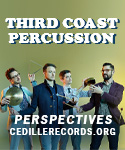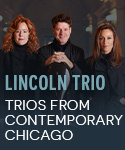The new concert season is now upon us, and with it will come one of the most peculiar spectacles in the arts: the annual round of international tours by orchestras the world over. Once a laudable effort to introduce classical music to those who might otherwise never have had the opportunity to see a great ensemble in live performance, touring has become a tired ritual that ultimately debases our musical culture through overkill and excess. Formerly the rarely exercised and exclusive preserve of the world’s performing elite, it is now both big business and an entitlement that eats up millions of (subsidized or tax-free) dollars that could be far better spent in local outreach and educational efforts, better pay for artists, commissioning of new works, improvement of existing facilities, creative programming initiatives—or not spent at all and saved for some nobler purpose, like alleviating world poverty or medical research, perhaps.
Let’s not kid ourselves: the advancement of culture has nothing to do with it. I vividly remember a good friend describing to me his first encounter with classical music: at a performance of Schubert’s Ninth Symphony under Joseph Krips with the Vienna Philharmonic in a high school auditorium in Joliet, Illinois. That was what touring used to be about–a great ensemble making no issue about bringing its special tradition of music making to places that would otherwise never, ever, have the chance to hear it. There was something noble and genuinely humane in the effort to share with the wider world a unique historical legacy of performance. Events such as this really do have the potential to offer revelations to listeners, both by virtue of their excellence as well as their once-in-a-lifetime specialness.
How different the situation is today! Cities and towns no longer make do with high school auditoriums, or even mere concert halls. Now they have “performing arts centers,” whose job it is to suck in as much activity as humanly possible in any given season. I’m not sure what came first, the surfeit of groups whizzing around the world looking for places to play, or the politically trendy desire to erect palaces of culture at regular intervals to attract them, and it really doesn’t matter. What matters is the fact that politicians want to leave a legacy of such monuments to cultural enlightenment, most places eventually get one, and the mindless routine of second rate groups giving second rate concerts, or even worse first rate groups giving second rate concerts, continues.
Consider this: A major tour, especially for an orchestra, is not normal, congenial, or conducive to the creation of great performances. It’s exhausting and uncomfortable, both physically and mentally. I can’t even begin to list the number of orchestra members I’ve spoken to over the years after desultory performances in New York , ones that should have been the climax of a grand international tour, only to have them tell me, “We are so tired, we just can’t keep up the quality under these conditions.” More than 30 years of constant concert attendance has convinced me that this isn’t the exception. It’s the rule.
The performing arts industry is now doing to itself exactly what the recording industry has done: destroying its value by glutting the market. One of the easiest ways in general to dry up such a glut, horrifying though it may sound, is to deliver less, but deliver better: in other words, fewer concerts, greater selectivity, and a stronger effort to explain to the public why any of it matters. Of course, this would mean for most organizations accepting the unthinkable, which is that perpetual growth is not good, and that the voracious apparatus of fund raising and subsidy gathering that has developed to support their activities needs to find a better answer to the question of “Why should I support you,” than “So that we can do more and more and more.” In the fine arts, more is not better; it is the first step on the slippery slope towards irrelevance.
The big money game that performing arts institutions now play can’t continue, will not continue, and is going to start getting very messy very shortly unless these people find a sensible niche and learn to live within it. Cutting down on touring represents a logical place to start, as it’s hellishly costly and accomplishes virtually nothing useful as presently constituted. New York , for example, will not suffer culturally if it does not hear the world’s great orchestras playing primarily the same limited repertoire every single year, never mind the large number of lesser groups it does not need to hear at all, ever. And there are very few stops on the tour circuit of which the same can’t be said.
Let’s also spare a thought for the home-town team: the New York Philharmonic. How is an orchestra that plays week in, week out, to compete with a constantly changing roster of great ensembles showing up not just at Carnegie Hall a few blocks away, but also in its own concert hall at Lincoln Center ? All of today’s great orchestras were founded and developed for the express purpose of serving their local communities. What purpose do they serve now? Who needs them? Is the music that they play, or the way that they play it, so unique that New Yorkers have no other options? Of course not. If the New York Philharmonic vanished tomorrow it would hardly register in the life of a typical concertgoer, and that, my friends, is just plain wrong.
What a horrible irony it would be if, in reward for more than a century and a half of tireless dedication to the music lovers of New York , the Philharmonic were to realize one day that it has become for all intents and purposes irrelevant. As the management and players gird for battle over new pay increases to their already extravagant contracts, they might do well to pause for a moment to reflect on what their true value is to the community, given the current state of affairs. The irony becomes even greater when we realize that one of the tools that the Philharmonic is forced to use to justify its value to the people of New York is the international prestige that it accumulates through, you guessed it, touring. What kind of sick system is it that requires that the importance to the community of a local arts institution be measured in terms of the number of performances it gives and the acclaim that it receives elsewhere?
The reason most often cited for touring nowadays is not “to advance the cause of culture” among the geographically challenged. It is “prestige.” Maybe this makes the touring orchestra’s management feel good, and maybe it gives them a little salutary press back home. But we need to ask ourselves if the price is worth it in terms of the harm it does. The current system undermines civic pride in local arts institutions, and so chips away at the support base that they have worked so hard to build. It will ultimately destroy the value of classical music events, while seldom offering anything artistically significant in exchange.
I am not ordinarily a naysayer when it comes to the classical music world, but here I think the writing is indeed on the wall. The audience for classical music concerts, as for recordings, is not large enough as it stands to support this ever increasing amount of activity. Neither governments nor foundations nor wealthy private contributors will support indefinitely an activity that its purported audience ceases to care about because it has become a ubiquitous and mechanical routine. I suspect that in the next decade or so a major market “correction” is in the offing, and it can either be handled smartly and well (if sooner), or stupidly and painfully (if later). What good is mere prestige garnered abroad, after all, when nobody at home is listening?
David Hurwitz































